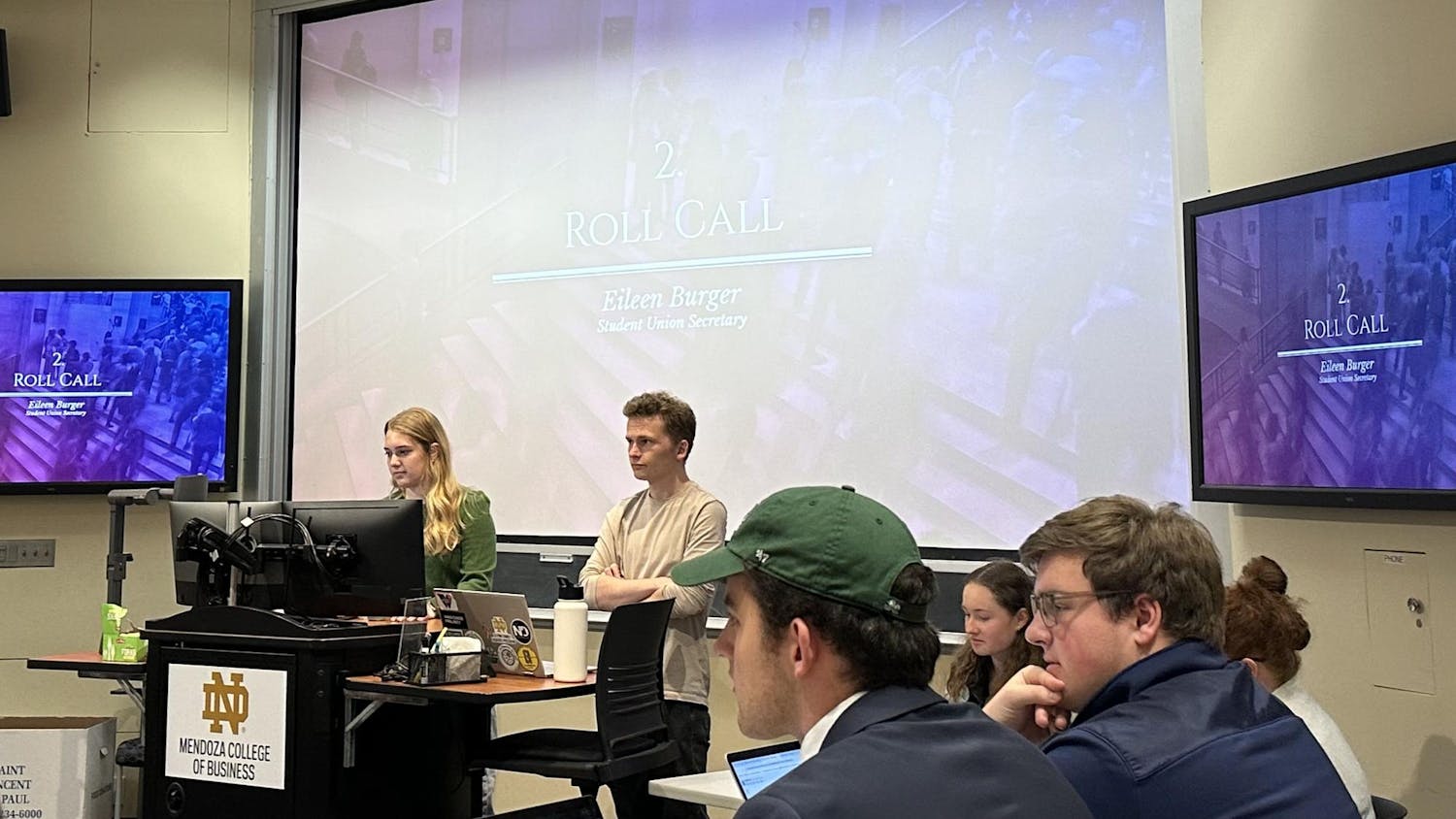On Wednesday, the Nanovic Institute for European Studies continued its lecture series on World War I, celebrating the Great War’s 100-year anniversary. Dr. Jonathan Gumz, lecturer of modern history at the University of Birmingham, presented a lecture titled, “Violence, Military Occupation and the First World War: Rethinking Paradigms" in the Annenberg Auditorium of the Snite Museum of Art.
Gumz’s presentation focused on reasons why occupation in World War I has been forgotten until recently in world history.
Gumz highlighted several factors which have caused this phenomenon — namely, the vast amount of history surrounding World War II-era Germany.
“Occupation in the Second World War tends to black out occupation in the First World War,” Gumz said. “The experience of occupation under the National Socialist Party was so searing that occupation in the First World War disappeared.”
Gumz discussed how the history of World War I typically focuses on the Western Front rather than the Eastern Front, where occupation was more rampant.
“The historiography of WWI looks at the Western Front, where less occupation occurred," he said "The historiography focused on trench warfare and the home front."
Gumz highlighted how although history tends to view occupations as violent and lengthy ordeals, the period of violence is rather muted in the grand scheme of an occupation.
“What I want to emphasize is that it is a brief burst of violence at the beginning of the war,” Gumz said. “These were fragile armies and were working at the limits of what they possibly could do."
Gumz correlated the linkages between German occupation in World War I and the systematic way in which the Nazis occupied much of Europe during World War II.
“German strategy and war economy comes evermore linked to occupations,” he said. “That puts occupations in a dangerous place”.
Although the presentation primarily focused on debunking the so-called negative aspects of occupation, Gumz was quick to agree with an audience member who mentioned more “positive” occupations, such as the United States’ occupation of post-WWII Germany.
“The only reason that this step can be taken is because the Germans themselves have instituted such transformative occupations during the war which opens up the intellectual space for the Allies to implement such occupations in post-war Germany and Japan,” Gumz said.
Gumz continued to say that each phase in the history of occupation is necessary for the next phase to begin, which culminated in the sort of transformative occupations in Europe and Asia.
The lecture is the fourth of five in the Nanovic Institute for European Studies' series. All lectures are free and open to the public.













